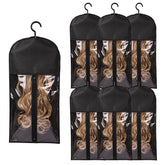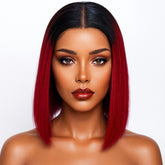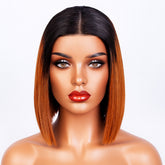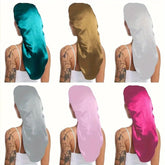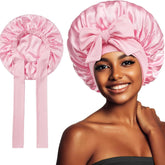Riley Burruss debuts new hair ahead of Next Gen NYC season 2

Riley Burruss, a cast member of Bravo's Next Gen NYC, has shared a before-and-after hair transformation ahead of the show's second season. The images show a clear change in her styling, drawing attention from fans and tabloid outlets as viewers await the new instalment of the reality series.
Fresh look timed with a new season
Reality television personalities frequently alter their appearance between seasons, and Burruss's timing follows that pattern. According to the accompanying images, she opted for a noticeably different hairstyle ahead of the programme's return, a move that often signals a readiness to refresh a public persona or to reflect personal change off-screen.
Such visual updates are commonly covered because they are easy to share on social platforms and generate immediate engagement. In this instance, the photos function as a preview as much as they do a personal update, offering fans a glimpse of how cast members will present themselves when the cameras start rolling again.
What the images show
The available photographs present a classic before-and-after format, showing Burruss in her previous look and then in the updated style. Broadly, these images reveal the following:
- A change in hairstyle that is visible without extensive commentary.
- A presentation intended for public consumption — the kind of update that usually appears on social feeds or publicity galleries.
- A reminder of the visual element that underpins much reality-TV promotion: style and appearance remain central to how contestants and cast members are marketed.
Editors and commentators tend to treat such galleries as both lifestyle coverage and promotional material for the show, because they blend personal expression with publicity for forthcoming episodes.
Audience response and cultural context
Reaction to cast members’ style changes is a predictable part of the social-media cycle surrounding popular television. Fans of reality formats often respond quickly to new images, discussing both aesthetics and what the change might suggest about the individual’s storyline. Coverage of these reactions typically focuses on three themes:
- Immediate public responses — admiration, curiosity or debate about the new look.
- Broader conversational threads — how a cast member’s choices fit into trends in fashion and beauty, particularly within urban, youth-oriented reality programming.
- The commercial and promotional angle — style updates can be leveraged to build momentum ahead of premieres.
Even when the transformation itself is the story, it sits within a larger discourse about identity and image in the reality-TV ecosystem. Cast members often use visible changes to signal personal growth, new directions or simply to refresh their on-screen persona.
Style shifts and reality television
Reality television has long relied on visual cues — wardrobe, hair and makeup — to create narratives and give viewers hooks to discuss. Cast members’ transformations attract attention because they are simple to document and share, yet they can carry narrative weight. A haircut or new colour can be framed as symbolic: a fresh start, a new confidence, or a deliberate repositioning within the social dynamics of a show.
From a production perspective, these changes also serve practical purposes. They distinguish seasons visually, refresh promotional material, and maintain audience interest between broadcast cycles. For the participants, a new look is often a low-risk, high-reward way to generate conversation and press coverage without needing to reveal private developments.
Practical takeaways for viewers and followers
- If you follow Next Gen NYC for fashion and lifestyle inspiration, expect more promotional images as the season launch approaches.
- Style changes on reality shows are as much about narrative framing as personal taste — they are curated for public consumption.
- Quick visual updates — like before-and-after photos — remain one of the most efficient ways for personalities to re-engage an audience between seasons.
Takeaway
Riley Burruss’s hair transformation fits a familiar pattern in reality television: cast members refresh their appearance ahead of a new season to reignite interest and broaden their public profile. The images operate on two levels — personal expression and promotional tactic — and they feed into the fast-moving media cycle that surrounds modern reality programming. For viewers, such updates provide a light, accessible way to reconnect with a show’s cast; for producers and participants, they are a simple tool to keep a series in public view as a new season approaches.

